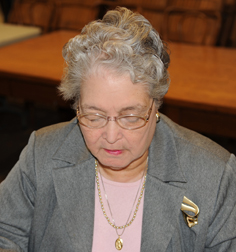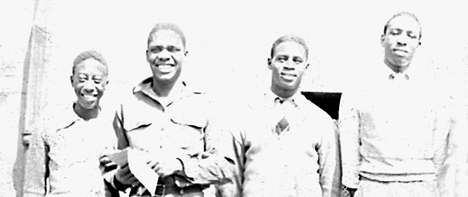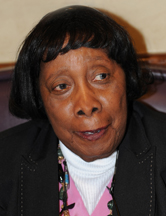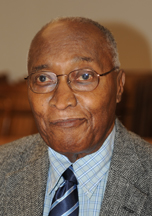

Social Activism and Social Justice |
||||||||||||||||
“Segregation was everywhere but never discussed. Holmes High School [the white school] had many advantages and their curriculum included job-oriented courses that Grant’s curriculum did not have—actually, that we were not allowed to have.” |
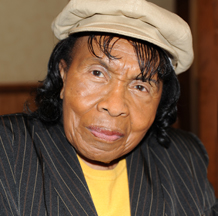 Marguerite Bunyan Giles |
|||||||||||||||
This research project falls within the realm of the “long civil rights movement”—an effort to examine the struggle for civil rights and social justice during the decades before the 1954 Brown v. Board of Education Supreme Court decision. One of the more complex questions that arises in the field of education concerns teachers’ efforts to engage in political and cultural struggle. Black teachers during the 1940s who were members of the NAACP ran the risk of losing their jobs; public statements and actions could have been life-threatening. Even support of unions could cause a teacher to be dismissed, as was the case at Grant High School. |
||||||||||||||||
“Discrimination took many forms. The Board of Education established our basic curriculum, and the girls at Grant worked in the school laundry and ‘the flat,’ an apartment where we learned to clean. The girls learned how to cook, wash, clean, and the Holmes football team [the white school] sent their uniforms to us for cleaning. The school board did not see it necessary to have business courses for us.” Marian A. Harper |
||||||||||||||||
Seventy years of hindsight offers offer little insight for today’s research to ascertain what acts and gestures should have been undertaken by teachers in 1940. Social activism within the classroom and outside of the school take on differing meaning and levels of “impact.” What does become apparent is that Grant High School educators were well aware of social injustices, and seemingly many engaged in efforts to instill courage among students as a way to work for civil rights and social justice. |
||||||||||||||||
|
“We recognized that we would enter a segregated society, but Mr. Hargraves’ class prepared us to go out into the world and face the problems of the day so that we would not be timid or afraid. He helped us figure out our beliefs and let us know that we could succeed (often before we recognized what we could do).” |
|||||||||||||||
“Mr. Hargraves discussed current events but could not discuss civil rights. He, as well as the other teachers, had to protect their jobs and we understood that. We knew the school board’s position about our school, and we knew that the teachers could not teach us the significance and importance of desegregation.” |
|
|||||||||||||||
| “A mixed racial heritage would allow Mr. Merry to ‘work both sides of the street’ between white and black people effectively. Indeed, on important matters of administrative and educational significance some white people had more confidence in a ‘colored man’ who looked physically like a ‘white man.’ On the other hand, Merry’s mixed racial background benefited black people in some situations. For instance, Mr. Merry is reported to have wittily used his ability to ‘pass’ to facilitate practical matters for his black teachers and students in other parts of Kentucky, during a period when racial discrimination such as refusal of food service to black people was blatant.” from The Life and Legacy of Lincoln-Grant School by Joseph M. Walton, page 137 |
||||||||||||||||
|
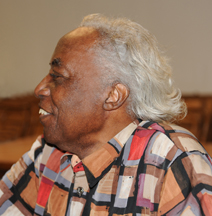 Charles Houston |
|||||||||||||||

an institutional member of the International Coalition of Sites of Conscience
Museumofed@gmail.com

